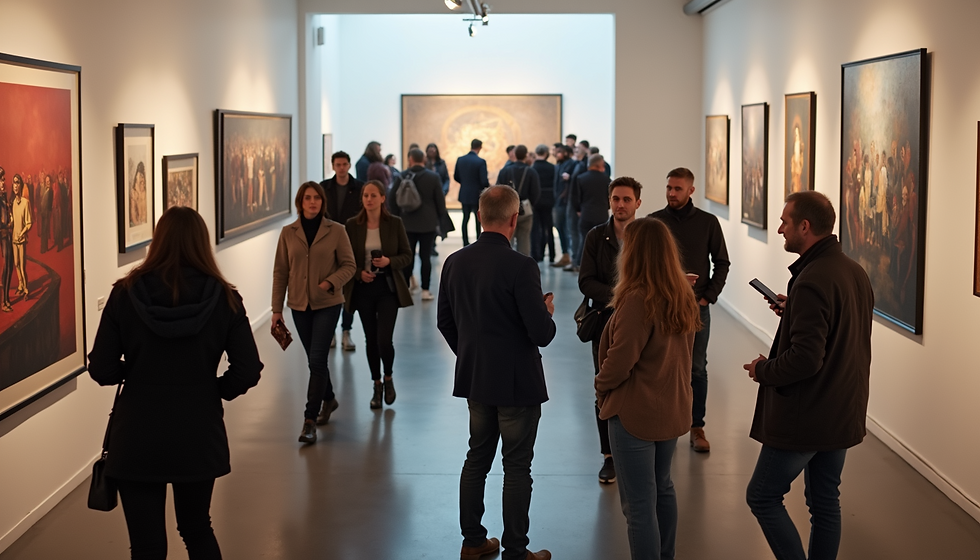When Memory Becomes Art: Exploring Chetan Bhakuni’s Work
- Artlune

- Sep 24
- 3 min read
Chetan Bhakuni’s art takes us straight into his past. His paintings often circle back to two figures—himself and his mother, making the work feel intimate and deeply personal. Through them, he brings together memory and art out of themes of love, pain, and the weight of difficult memories.
For Chetan, art isn’t about closure. It’s about facing loss head-on. His mother isn’t only a memory, but a presence that continues to shape his work. Every mark he makes feels personal, almost like a confession; raw, honest, and filled with the weight of grief.
Here we will talk specifically about his 3 works:
Memories of a Murderer – V
Chetan Bhakuni’s Memories of a Murderer – XIII is a moving exploration of grief, memory, and the bond between mother and son. Using scratching, layering, and staining, he creates a surface that feels raw and intense—simple in structure but heavy with emotion.
At the center of the painting, the artist depicts himself holding the stool on which his deceased mother stands. This image becomes symbolic, showing his effort to keep her close, even as she slips away.
The limited use of color makes the feelings even stronger. The rough marks around his mother’s figure are not just random gestures. They echo trauma, urgency, and absence. Together, they create a haunting presence that feels alive yet just beyond reach.
This is not a quiet memory. Instead, it is Chetan facing grief directly and turning it into art.
Memories of a Murderer XIII
In this work, Chetan Bhakuni paints himself in repeated figures, as if trying again and again to hold onto his mother’s fading presence. The multiple images capture that desperate attempt to grasp memories as they slip further away. His mother stands quietly in the scene, dressed in blue, while he appears in black charcoal, set against a red backdrop that intensifies the feeling of turmoil.
A stool in the background becomes more than just an object; it hints at absence, at the fragility of support, and at the ordinary domestic spaces where love, conflict, and loss once unfolded. Through soft pastel, charcoal, and ink, Chetan layers emotion into material, making grief both visible and tangible.
The painting is less about representation and more about longing: a visual struggle to keep conversations, care, and memory alive when the person is no longer there.
Cogito, Ergo Sum
In this painting, Chetan chooses to portray himself wearing his mother’s saree. For him, the saree is not just 5 yards of cloth. It carries the warmth of her presence, almost like a lingering embrace. By placing himself in her attire, Chetan suggests that his mother’s care, love, and influence continue to live within him, shaping who he is even after her passing.
The work is made from multiple sheets of paper joined together to form one big image. These gaps between the sheets are intentional, showing the cracks inside Chetan. By leaving these ruptures visible, he lets us see how grief changes both memory and self.
The background is left empty and stark, creating a sharp contrast with the figure. This emptiness represents absence, the silence and void his mother’s loss has created in his life. It turns the figure into the central focus while also amplifying the feeling of loneliness and disconnection.
Final Thoughts
Chetan Bhakuni’s paintings are more than portraits. They are deeply autobiographical pieces where love, memory, and pain coexist. He transforms personal grief into a visual language that feels universal, inviting viewers to reflect on their own bonds, losses, and the ways memory lingers even in absence.






